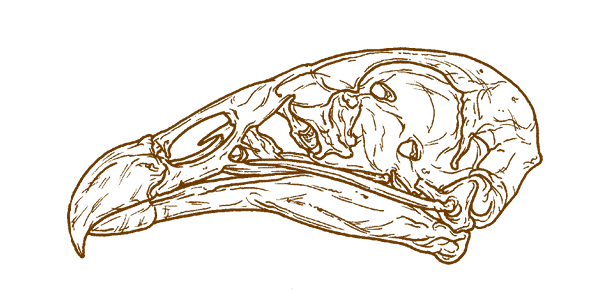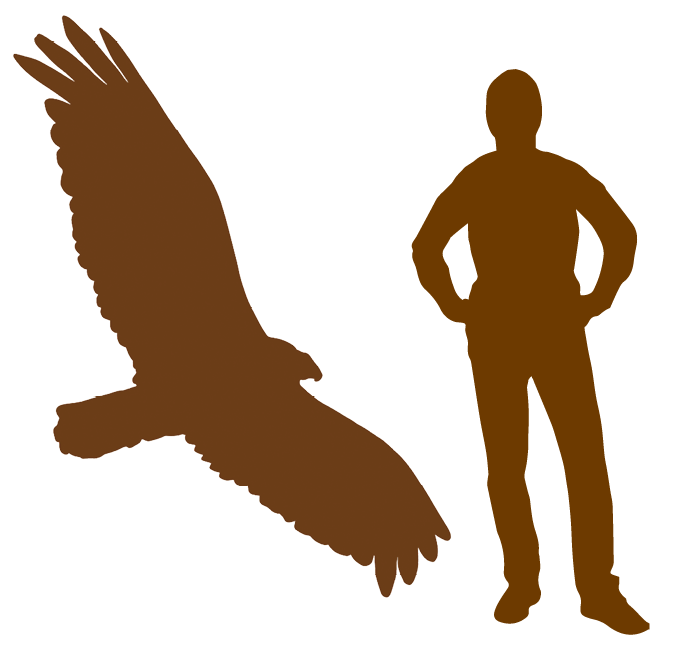
Turkey Vulture
Cathartes aura
(kath-ar-teez or-a)

Like most vultures, this enormous bird is bald. While this means they may never be as cute as a cockatoo, it does mean they can feast on their favorite food—carrion—without the risk of getting bits of dead animals stuck to their head. Plus, it would be a waste of time and effort to have to clean their feathers after every meal—they’ll only get dirty again at dinner!
Turkey vultures have a massive wingspan of nearly 6.5 feet (2 m), yet they’re incredibly light, weighing only around 3 to 4 pounds (1.5–2 kg). They are larger than hawks, but smaller than eagles and condors. Most of their feathers are a glossy brownish-black color. Their hooked ivory beaks help them tear meat off carcasses.
Where They Live
Turkey vultures live throughout much of North and South America, including Canada, Chile, and parts of the United States, like Texas and Minnesota. In the winter, they migrate to warmer climates. Where they roost depends on where they’re feeding at the time, which can vary from forests to fields to deserts to coasts, in trees, cliffs, or man-made structures.

What They Eat
What might taste revolting to us is what’s tastiest to a turkey vulture! Like marabou storks, these raptors eat mostly carrion. This means they feed on animals that are already dead and have often started to decay, including roadkill, cattle, and smaller birds. Sometimes they’ll eat insects or fruit.
Scavenger birds like these are critically important to the earth’s ecosystem because they clean up germ-ridden animal carcasses that might otherwise contaminate the water or soil.
Conservation Status
Least Concern
Turkey vultures have a creative way of deterring predators. If threatened, they’ll throw up their last meal (which was almost always old, rotting meat). This gives off such a strong, foul odor that other animals won’t stick around for long. Thanks to this stinky trick, they face few natural predators. Humans cause the most harm to this species, through trapping, shooting, and car accidents.

Fun Facts
